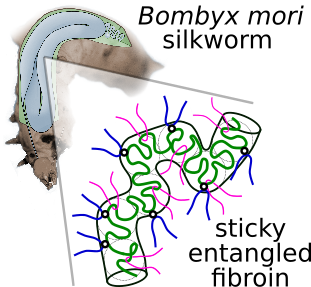Power Law Stretching of Associating Polymers in Steady-State Extensional Flow
Published in Physical Review Letters, 2021
Cite: C. Schaefer & T.C.B. McLeish. "Power Law Stretching of Associating Polymers in Steady-State Extensional Flow." Phys. Rev. Lett.. 126, 057801 (2021) https://journals.aps.org/prl/abstract/10.1103/PhysRevLett.126.057801

Silk produced by spiders and silkworms is tougher than steel, produced at less than a tenth of the energy consumption required for man-made fibres, and is biocompatible and biodegrable - silk is excellently suitable for medical applications and green materials. In order to improve synthetic materials, we (myself and Prof. Tom McLeish in the Physics of Life group of York) observe and learn from the animals in collaboration with Dr. Pete Laity and Dr. Chris Holland of the Natural Materials Group at the University of Sheffield. Previously, in Macromolecules, we revealed that the silk protein not only looks like a polymer (which has already been known for a long time) but also behaves as a polymer. Specifically, we found it behaves as a sticky polymer. Now, in Physical Review Letters, we found that a broad class of sticky polymers respond very different to external stimuli (flow) than non-sticky ones do. Our work suggests that polymeric stickiness should become part of the strategy to design a novel class of bio-inspired fibres.
